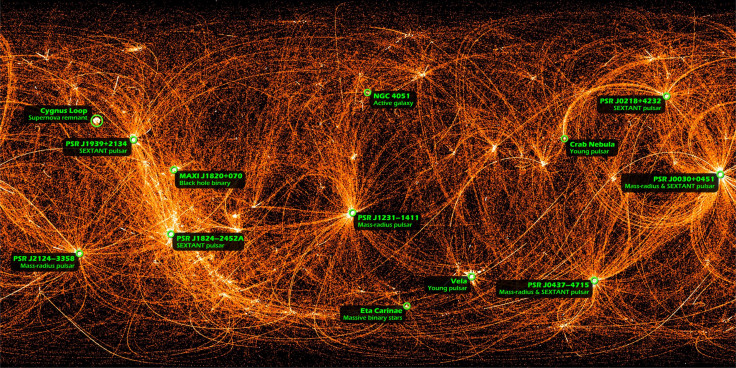NASA Captures Stunning Photo Of Entire Night Sky In X-Ray

NASA’s Neutron Star Interior Composition Explorer (NICER), a payload on the International Space Station (ISS), recently released an image of a map of the entire sky in X-rays. The stunning image shows various cosmic events including remnants from dead stars.
Officially launched in June 2017, NICER docked with ISS to carry on with its scientific goal of providing exact measurements of the remnants of neutron stars, which are dead stars that have already exploded. By doing so, NICER is able to track and target cosmic or X-ray sources as the ISS orbits Earth.
As the station orbits and transitions from day to night, NICER moves to pinpoint its other targets or sources of X-rays. The latest image that it captured is a compilation of the data it has gathered for the last 22 months, according to NASA.
The image, which looks like a map of air traffic routes, actually shows arc traces of X-ray sources. The brightest or most prominent arcs indicate that NICER tracked the same paths between its targets.
Some of the arcs captured by NICER came from the Cygnus Loop, which is the remaining cosmic structure that was formed due to a supernova that occurred thousands of years ago. According to Keith Gendreau of NASA’s Goddard Space Flight Center, the discovery of the Cygnus Loop shows how NICER’s tracking and imaging systems can help in detecting new X-ray sources.
“Even with minimal processing, this image reveals the Cygnus Loop, a supernova remnant about 90 light-years across and thought to be 5,000 to 8,000 years old,” Gendreau said in a statement. “We’re gradually building up a new X-ray image of the whole sky, and it’s possible NICER’s nighttime sweeps will uncover previously unknown sources.”
The other sources detected by NICER include the black hole binary MAXI J1820+070, the young pulsar Crab Nebula and the large binary stars Eta Carinae. The other prominent sources captured in the image are pulsars, which are neutron stars that emit streams of X-rays as they spin.
NASA intends to use NICER’s mapping capabilities for future navigational purposes. Since NICER was able to detect the X-ray sources from pulsars, the space agency is hoping to use the same technology to create a map of the Solar System which can be used for navigation.

© Copyright IBTimes 2025. All rights reserved.





















